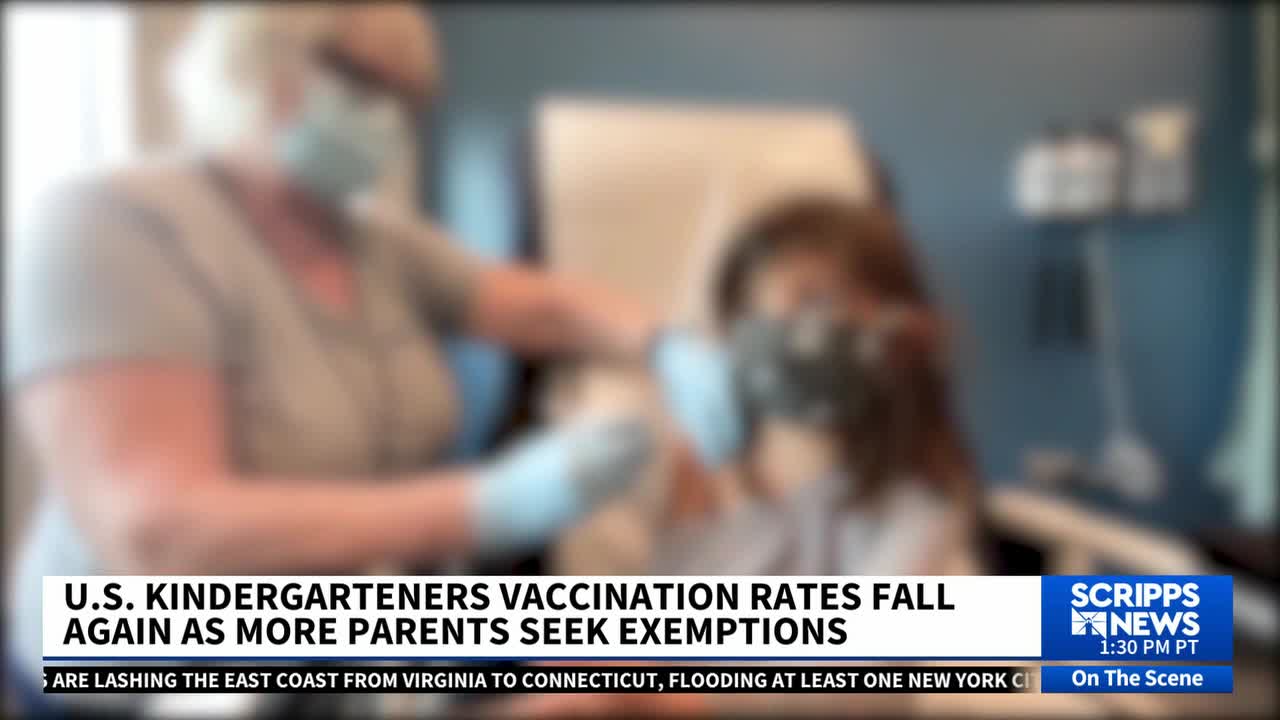DENVER — Measles may be spreading undetected in the Grand Junction area after an adult with no connection to other cases in the state and no history of recent out-of-state travel tested positive for the virus, state health officials said Friday.
The patient, an unvaccinated adult in Mesa County, is the county's first confirmed case this year, but state health officials said in a news release it’s likely there are more cases out there as there’s no clear indication how the person got infected in the first place.
The most recent case — and the state’s 20th overall for 2025 so far — suggests it “may be the result of community transmission in the Grand Junction area,” according to a Colorado Department of Public Health and Environment (CDPHE) spokesperson. Mesa County Public Health is investigating the case, officials said.
The individual may have exposed people to the highly contagious virus over the past couple of weeks, according to the CDPHE. Anyone who was in the following locations at the listed date and time may have been exposed and should monitor for symptoms of measles for the next three weeks:

School immunization data from the CDPHE shows the county’s largest school district, Mesa County School District 51, has a 94% vaccination rate for the MMR vaccine, with surrounding districts hovering in the low 90s and falling as low as 89% — well below the 95% herd immunity threshold needed to prevent a rise in cases.
What to do if you believe you were exposed
Anyone who believes they may have been exposed — especially those who have not been vaccinated with the MMR vaccine — should monitor for symptoms for 21 days and avoid public gatherings or high-risk settings, health officials said in the news release.
In this latest exposure, state health officials said those who were potentially exposed may develop symptoms between Aug. 28 and Sept. 4.
Symptoms to watch out for include anything from a fever, a cough, a runny nose, and red, watery eyes that develop into a rash that starts on the face and then spreads to the rest of the body about three to five days after symptoms first start. A person with measles is contagious four days before and four days after the rash appears.
While most people recover within two or three weeks after contracting the virus, unvaccinated people run the risk of complications from the disease, including ear infections, seizures, pneumonia, immune amnesia, brain damage and ultimately, death.
Measles only spreads from people who show symptoms; it does not spread from people who aren’t feeling sick, state health officials said.
Unvaccinated people exposed to the virus can get the MMR vaccine 72 hours after exposure (but before symptoms are present) to prevent an infection, according to health officials. Immunoglobulin (IG), if administered within six days of exposure, may also be used in some circumstances, they added.
“Getting vaccinated is the best way to protect yourself, your family, and your community,” a CDPHE spokesperson said.
While the two-dose series of the MMR vaccine has a 97% efficacy rate against infection, about 3 in every 100 people can still get infected if exposed to the virus, according to the U.S. Centers for Disease Control and Prevention (CDC). Vaccinated individuals will usually develop milder symptoms and are less likely to spread it to others, according to state health officials.
People who got vaccinated against measles before 1968 should talk to their health care provider about possibly getting a booster as the vaccine used before that year wasn't as effective.
Where have other cases been reported in Colorado?
This is the second measles case and the fourth exposure to the highly transmissible virus after a period of relative calm following an outbreak at Denver International Airport connected to an infectious traveler who arrived to Denver in late May.
Earlier this week, CDPHE officials said a 5-year-old child in Adams County was hospitalized with measles after traveling with family to Chihuahua, Mexico, where there is an ongoing outbreak of the virus. The child had not been vaccinated against measles, according to state health officials.
So far this year, Colorado has confirmed cases of the virus in Adams (3), Arapahoe (5), Archuleta (1), Boulder (1), Denver (4), El Paso (4), Mesa (1), and Pueblo (1) counties, per the latest state tally. Nearly a third of all cases this year have been among vaccinated individuals.
Colorado hasn’t seen this many measles cases since 1995, when the state reported a total of 26 that year, according to the CDC.





Denver7 is committed to making a difference in our community by standing up for what's right, listening, lending a helping hand and following through on promises. See that work in action, in the videos above.





